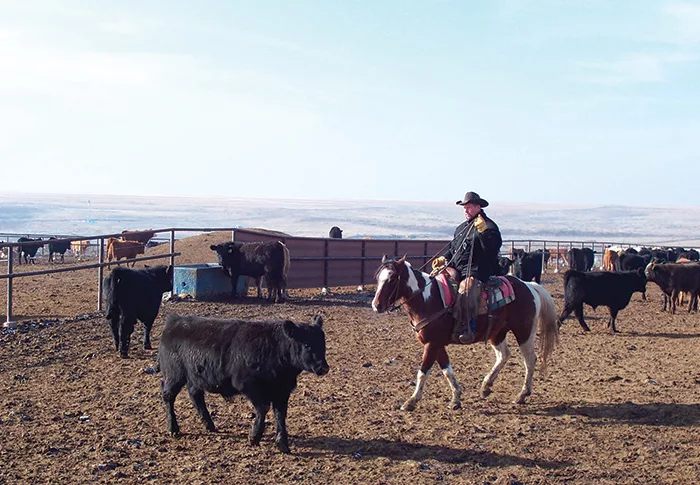American Farriers Journal
American Farriers Journal is the “hands-on” magazine for professional farriers, equine veterinarians and horse care product and service buyers.

WORKING COWBOYS. Feedlots like this one at Lane County Feeders in Ness City, Kan., still rely on cowboys to wrangle thousands of cattle. The hard work and varied conditions of these feedyards present a real challenge to horseshoers.
Shoeing feedlot horses can be more challenging than shoeing racehorses, show horses or trail horses. Most feedlot horses work constantly, in some of the worst conditions imaginable. Here’s some advice from four experienced shoers on what you can expect in shoeing feedlot horses and the importance of different environmental and weather conditions.
Baker Chapman shod for a feedyard in Lubbock, Texas, for 10 years and remembers the experience.
“Each feedyard is different,” he says. “At Lubbock, the alleys were paved and areas around the feed bunks were all concrete. It was really abrasive on shoes. It was difficult to keep shoes on because the unpaved areas got pretty muddy. It also depends on who’s riding. Some of the cowboys are good hands and others are more careless when they’re riding,”
Chapman planned his shoeing with those conditions in mind.
“I shod with clips and wide-webbed shoes. A lot of material packs up into the shoes and the footing is so abrasive that the shoes can wear all the way through the toe in about 6 weeks,” he says. “You have to keep these horses on a regular shoeing schedule. If a horse is ridden out there for just half a day without a shoe, he’d be out of commission for quite awhile.”
Proper hoof care also meant more than regular shoeing, Chapman says.
“This yard had 30 horses and 6 to 8 cowboys,” he says. “A lot of them kept their horses’…